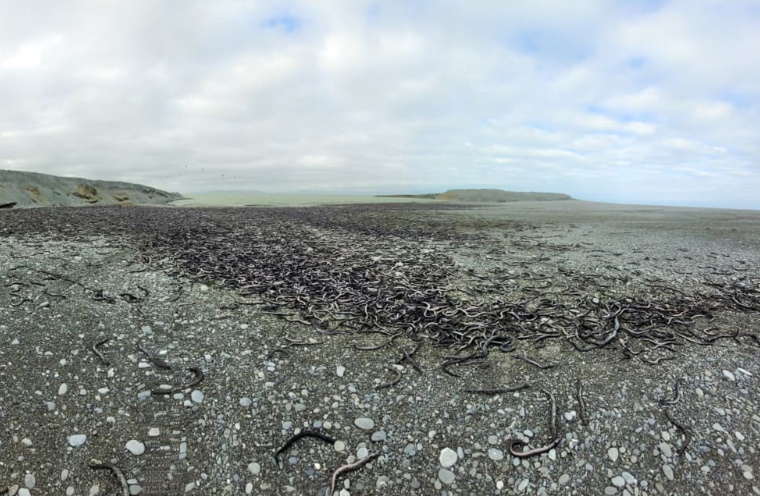
The Department of Conservation is calling for more to be done to prevent the mass death of thousands of migrating eels at Te Waihora Lake Ellesmere.
Eels estimated to weigh a total of one tonne died at Taumutu last Thursday during a failed heke (migration) from the lake, which is one of the country's most polluted with no natural outlet to the sea, to the Pacific Ocean to breed.
Canterbury Regional Council's general manager of hazards Leigh Griffiths said the tuna (eel) deaths were "a natural event which could occur at this time of year during the tuna migration or heke - when the tuna try to migrate to the ocean overnight".
The council used diggers to create a channel between the lake and sea at certain times, governed by a 1990 water conservation order and resource consents held jointly with Te Rūnanga o Ngāi Tahu.
Griffiths said the tuna died in the area where Te Waihora-Lake Ellesmere could be opened but the council "could not stop natural events occurring".
Te Taumutu rūnanga representative David Perenara O'Connell, who was also on the regional council's executive leadership team, mirrored Griffiths' comments in a video posted to social media.
He said there was an estimated 20 tonnes of tuna migrating on the night of the stranding, with most making it out to sea.
"As we know with the tuna heke, it's not always successful. That's mother nature - that's what's happened here for generations, for mai rānō (since long ago)" he said.
"It's sad we know, but it's just what our taiao (environment) does, and the way the circle of life happens."
Griffiths said the council had opened the lake to the sea many times for fish migration in the past, but did not have legal responsibility to ensure the migration of tuna, suggesting the Department of Conservation (DOC) would be better placed to comment because of its statutory responsibilities for protecting native species.
DOC operations manager Andy Thompson said while he wanted to see more done to prevent more mass eel deaths, the department are "not the decision makers on opening the lake".
"I feel this is an opportunity to talk about proactively doing more to prevent a mass stranding like this. We will discuss this with local authorities who have an interest in the lake, including iwi," he said.
"It's important that we do what we can to help native species and biodiversity."
He said DOC staff visited the site last Saturday to confirm the location and how many tuna were stranded, describing the scene as "very distressing".
Victoria University freshwater scientist Dr Mike Joy said he was angry about the council's response.
"I'm disgusted. Trying to blame the eels for a problem that's been caused by the failure of [the regional council] Environment Canterbury to protect that lake is the lowest of the low - I can't believe it," he said.
Joy said the lake and surrounding landscape had been drastically altered by intensive dairying, wetland drainage and lowered lake levels.
"There's nothing natural about that lake now, so referring to natural events is meaningless." he said.
"It's loaded with nutrients, the flows have been affected, the catchment is over allocated for irrigation water, which means the water table is lowered, the lake level is altered, the wetlands are gone. It's a completely human-modified lake now."
Joy said the council had a responsibility to protect the region's waterways.
"By not doing their job to protect this lake, Environment Canterbury has made the conditions where something like this is much more likely to happen," he said.
Te Rūnanga o Ngāi Tahu and the regional council signed the Te Waihora Co-Governance shared agreement in 2012. Selwyn District Council, Christchurch City Council and DOC joined in subsequent years.
Joint decisions to open the lake were made by the regional council and Ngāi Tahu.
A consultation group including the Waihora Ellesmere Trust, Te Taumutu Rūnanga, Lake Ellesmere commercial fishermen, DOC, the Selwyn and Christchurch councils, and Fish and Game provided advice.
Lake openings were temporary - it could close again quickly, even on the following tide if the swell was big enough - and could be expensive, costing between $20,000 and $150,000.
The regional council said lake levels were a key criteria for successful openings and the water was currently only marginally over the level that would allow it to be opened.
Last Sunday, the council said it was working to lower the beach crest at the request of Ngāi Tahu so eels had a shorter, less arduous journey to the ocean.
The earthworks were completed on Monday. The council said it would last until shingle naturally washed into the area and filled it up again.













